Designing loops, not paths
How cybernetic loops are helping us turn “human in the loop” from a catchphrase into a design practice
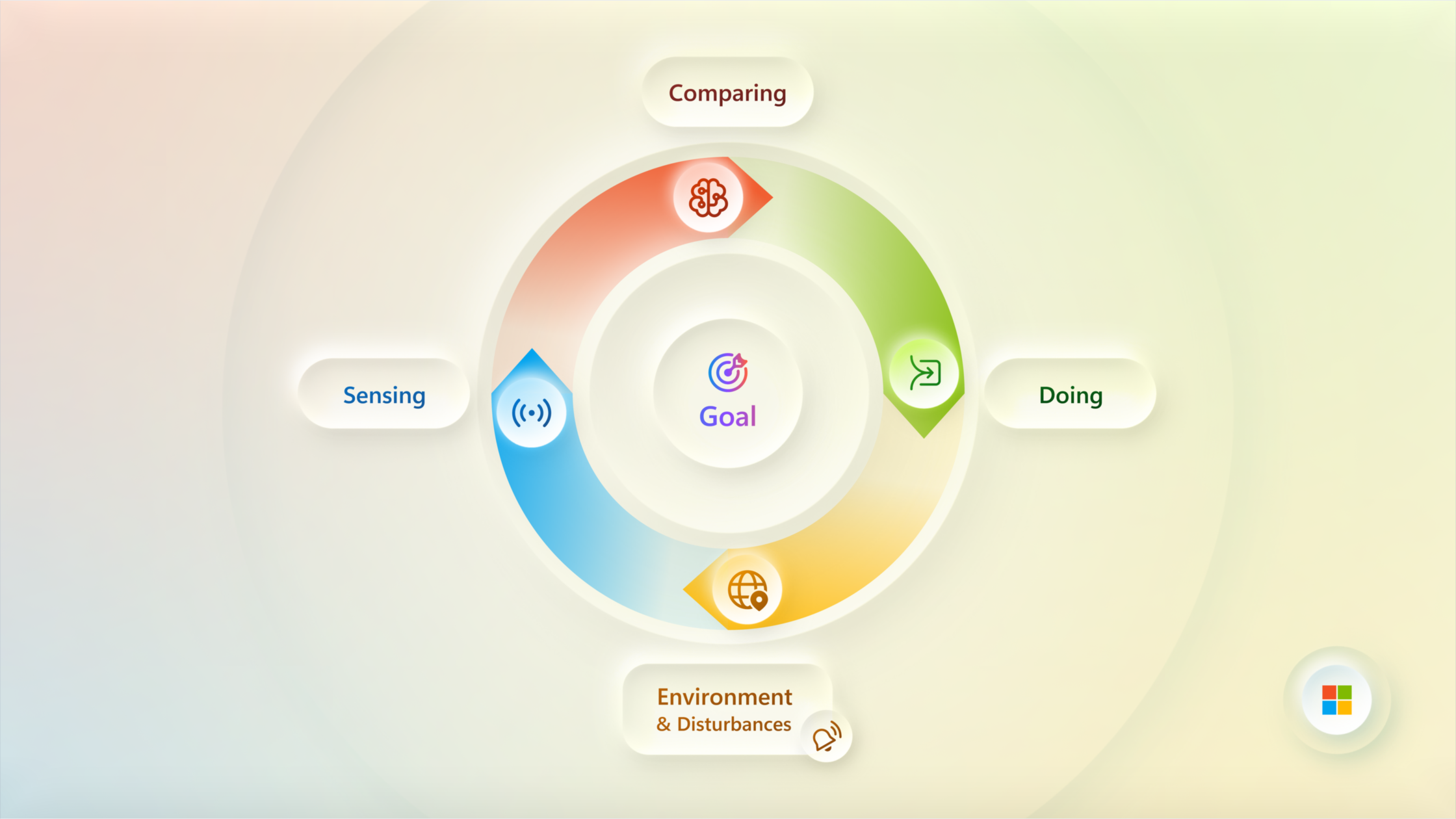
Matt Fick is a Senior UX Architect for Business & Industry Copilot and Max Peterschmidt is a Principal User Researcher for Business & Industry Copilot.
Imagine driving across town during rush hour. You might have a planned route, but traffic jams, roadwork, or weather force you to adapt—taking detours, checking traffic apps, looping back, or even stopping for coffee until things clear up. That’s because our interactions with reality rarely follow a script; they’re a series of adjustments and feedback loops.
As the technology landscape continues to evolve, established practices are giving way to innovative solutions. Software design has historically relied on workflow-based methodologies, breaking down objectives—often described as jobs-to-be-done—into individual tasks needed to accomplish those goals. This was largely due to the constraints of deterministic software, which limited flexibility. However, recent advancements in AI are expanding the range of design possibilities.
In this article, we’ll share some principles & mental models we’re using to guide the design of AI agents for business applications while keeping humans in the loop.
The tyranny of the workflow
Let’s start by drawing a comparison to a workflow. In traditional application design, a designer begins with a desired outcome and breaks that process down into steps. Depending on the complexity of the task, those steps may sit within a single product or span multiple products and user types (as shown below).
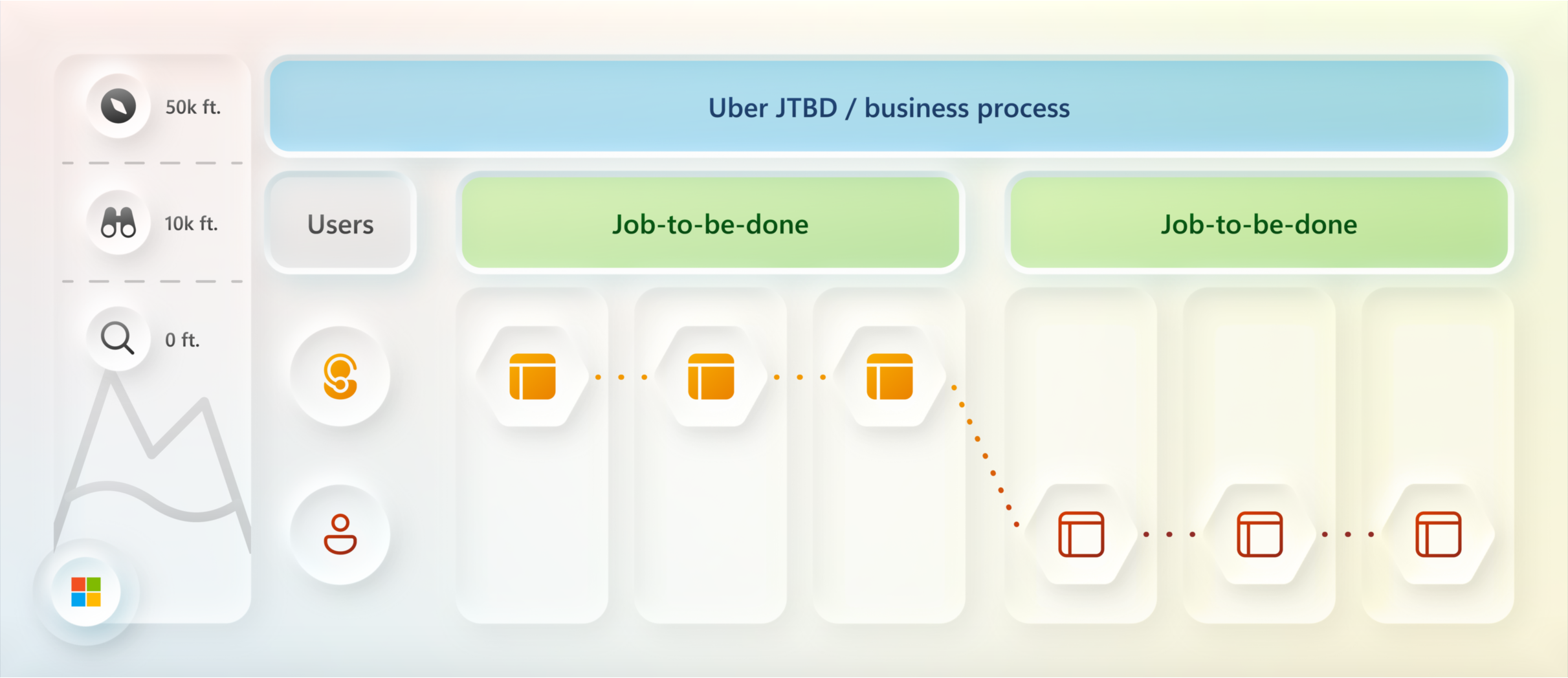
This approach worked for decades – at least since Alan Cooper introduced goal-directed design in 1995 – because it mapped well to the limits of deterministic design and graphical user interfaces. However, in the world of generative AI, this approach is dated and inadequate – real human behavior is much messier than a linear workflow would imply. The industry has clung to workflow-based products because there haven’t been any better options… until recently.
In our new era of adaptive, intelligent agents, workflows are a cage. As design tools, they are rigid, overcomplicated, and limiting; when we design with workflows, we create interfaces that are also rigid, overcomplicated, and limiting.
Designing loops
But what if we break the mold? Instead of deconstructing goals into linear stepped sequences, what if we shift our focus to true outcomes that can be achieved through a variety of means? One promising answer is found in the theory of cybernetics.
Cybernetics, documented as early as the 1940s, describes how an adaptive system engages with its environment through a continuous feedback mechanism. Cybernetic loops can describe biology, ecology, control systems, and intelligent systems such as artificial intelligence. Much of the thinking in our work is inspired by “Cybernetics and Service-Craft – Language for Behavior-Focused Design,” a 2007 paper by Hugh Dubberly and Paul Pangaro that proposed cybernetics as a systems design framework.
This diagram describes a cybernetic loop, the atomic element of the theory of cybernetics.
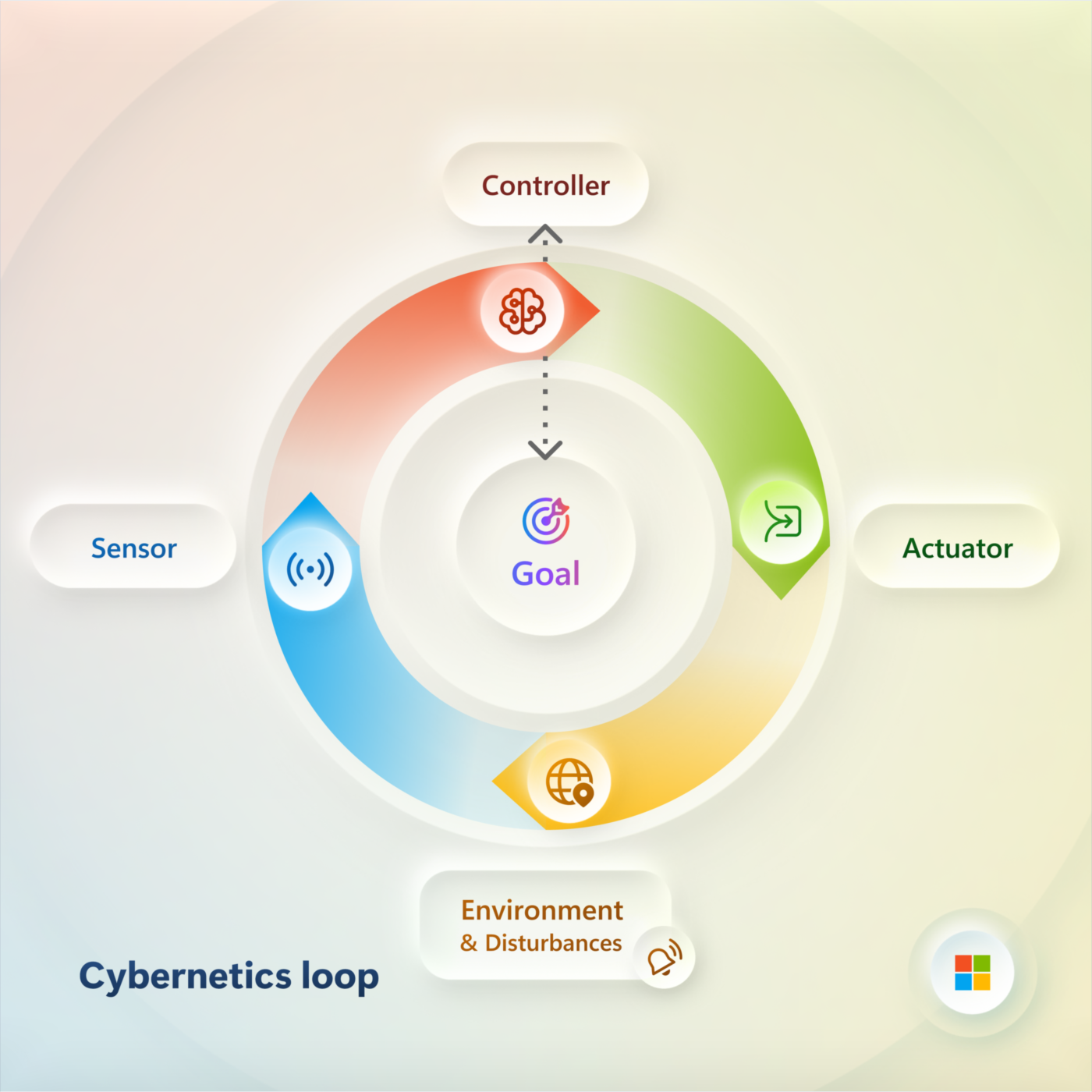
Instead of following a rigid, step-by-step workflow, the process unfolds as a continuous cycle—each component playing a distinct role in driving toward a goal. Let’s take a closer look at this loop-based system, using a common thermostat as an example:
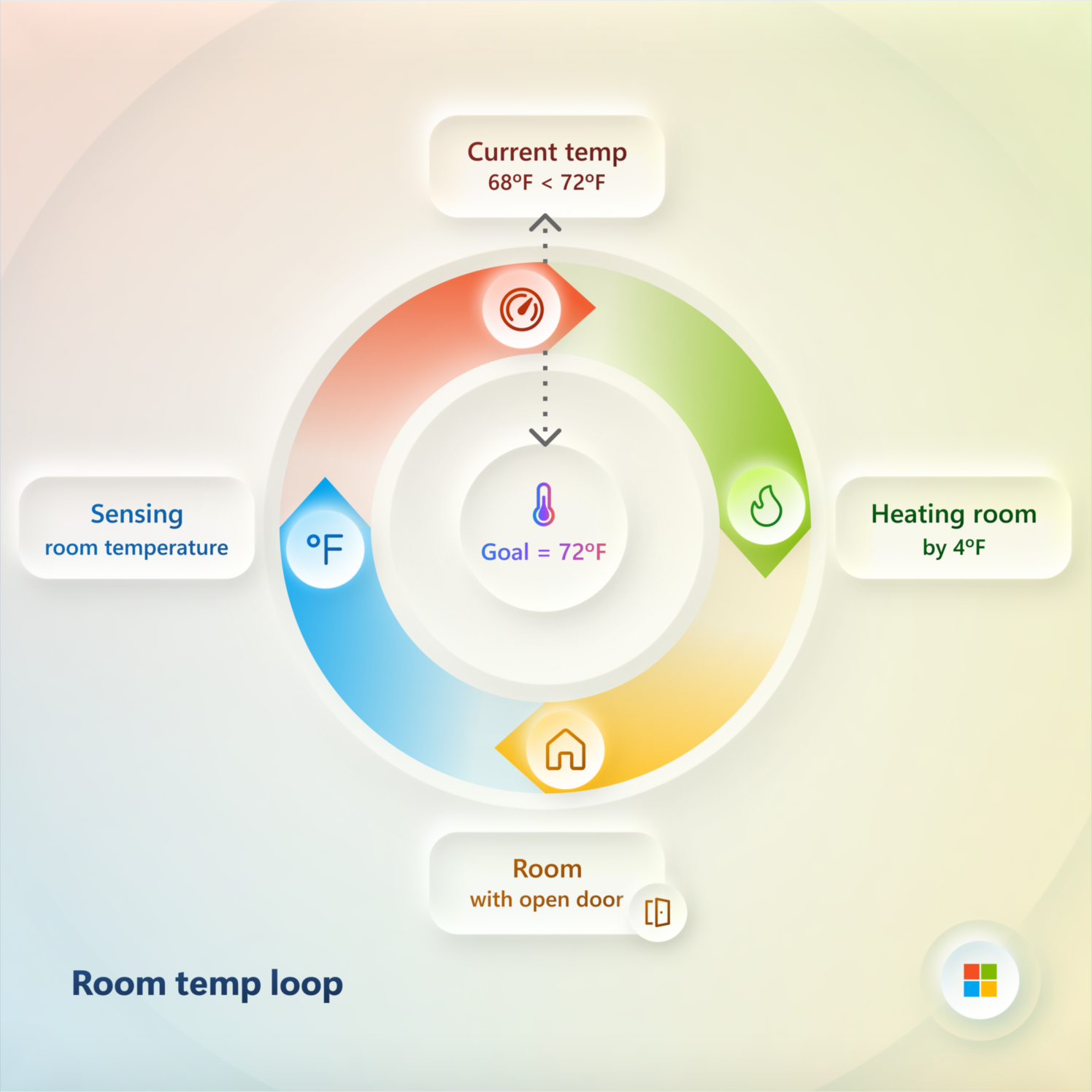
Setting a goal
First, a goal is defined—what ultimately is the system trying to achieve? This desired outcome is the foundation on which the system will ground all its actions and adjustments.
Making decisions
Next, the “brain” of the system—called the controller—evaluates information gathered from its sensors and compares it against the goal. For example, if the desired outcome is to maintain a room at 72°F and the sensors detect it’s only 68°F, the controller recognizes the gap and determines that something needs to change. In modern AI-powered systems, this controller can be either a person or an AI agent tailored to user preferences, ensuring that decision-making remains adaptable and user-driven.
Sensing what’s going on
To make informed decisions, the system must understand its current state. Sensors continuously collect inputs about the environment and provide critical information to the system’s controller to enable real-time adaptation.
The environment and disturbances
The environment represents the broader “world” the system seeks to influence—like the temperature of a room. However, the real world is inherently unpredictable: unexpected changes, like someone opening a window or door, can cause disruptions. The iterative nature of the system enables it to react to these unplanned disruptions.
Taking action
Once the controller determines an adjustment is necessary, the system takes action—such as turning on a heater to raise the temperature—directly manipulating the environment closer to the desired outcome.
Checking again (and again, and again…)
After taking action, the system’s sensors reassess the environment to determine if the action was effective. If the room reaches 72°F, the goal is achieved. If not, the cycle repeats—constantly sensing, deciding, and acting—until the goal is met.
The human in the loop
When AI makers talk about having a human in the loop, this is that loop. By viewing it as a set of components, we can purposefully design AI systems that include people as essential elements, rather than excluding them.
Here’s another example of a loop, illustrating the process for vibe coding:
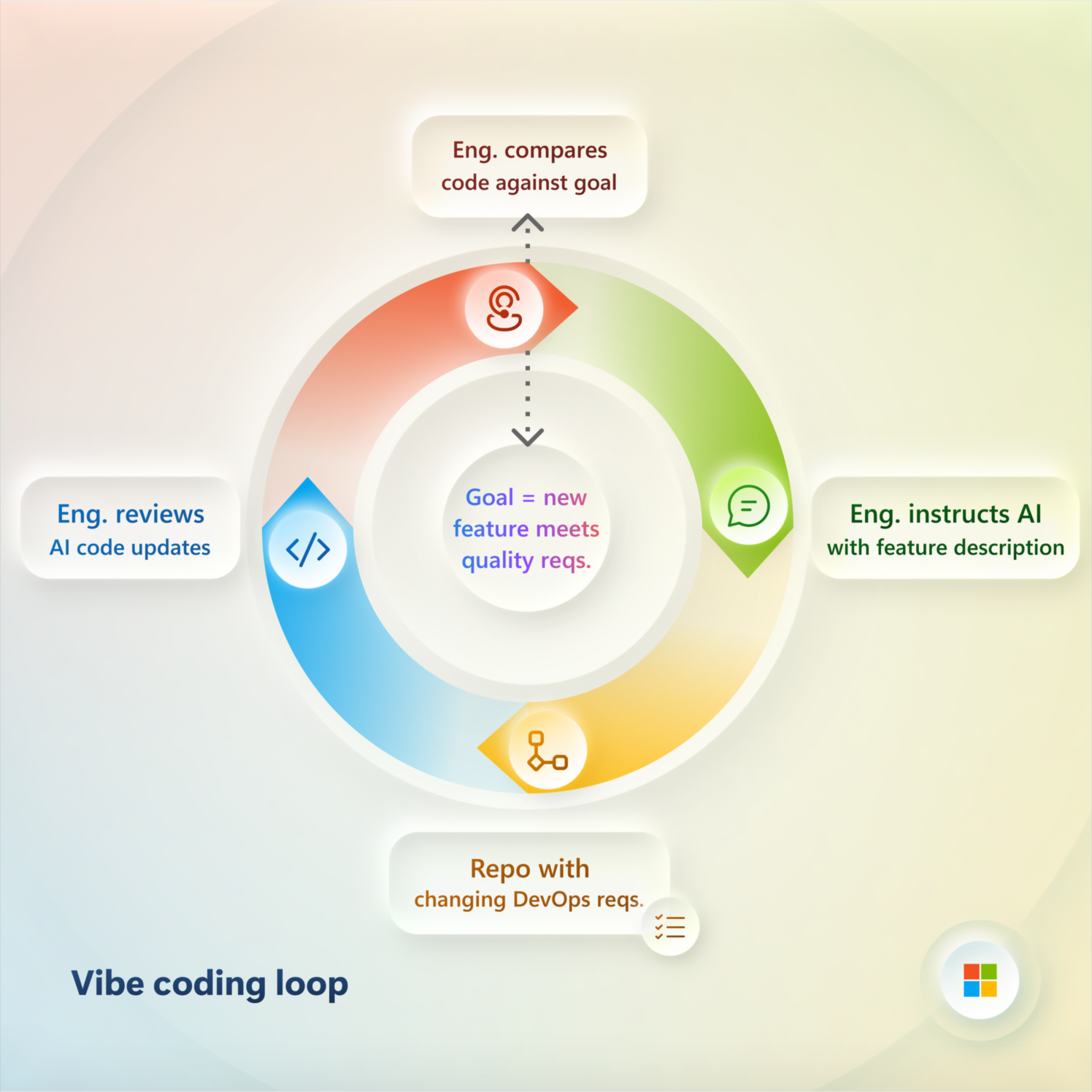
Nested loops
Building on this approach, we can unlock even greater flexibility and intelligence by introducing the concept of nested loops. Rather than limiting control and feedback to a single layer, we allow for multiple, interconnected layers, each with its own goals, controllers, and feedback mechanisms. For example, a software engineer guides a team of AI agents, ensuring the outputs align with project goals. This is a nested structure of oversight and action between humans and AI agents.
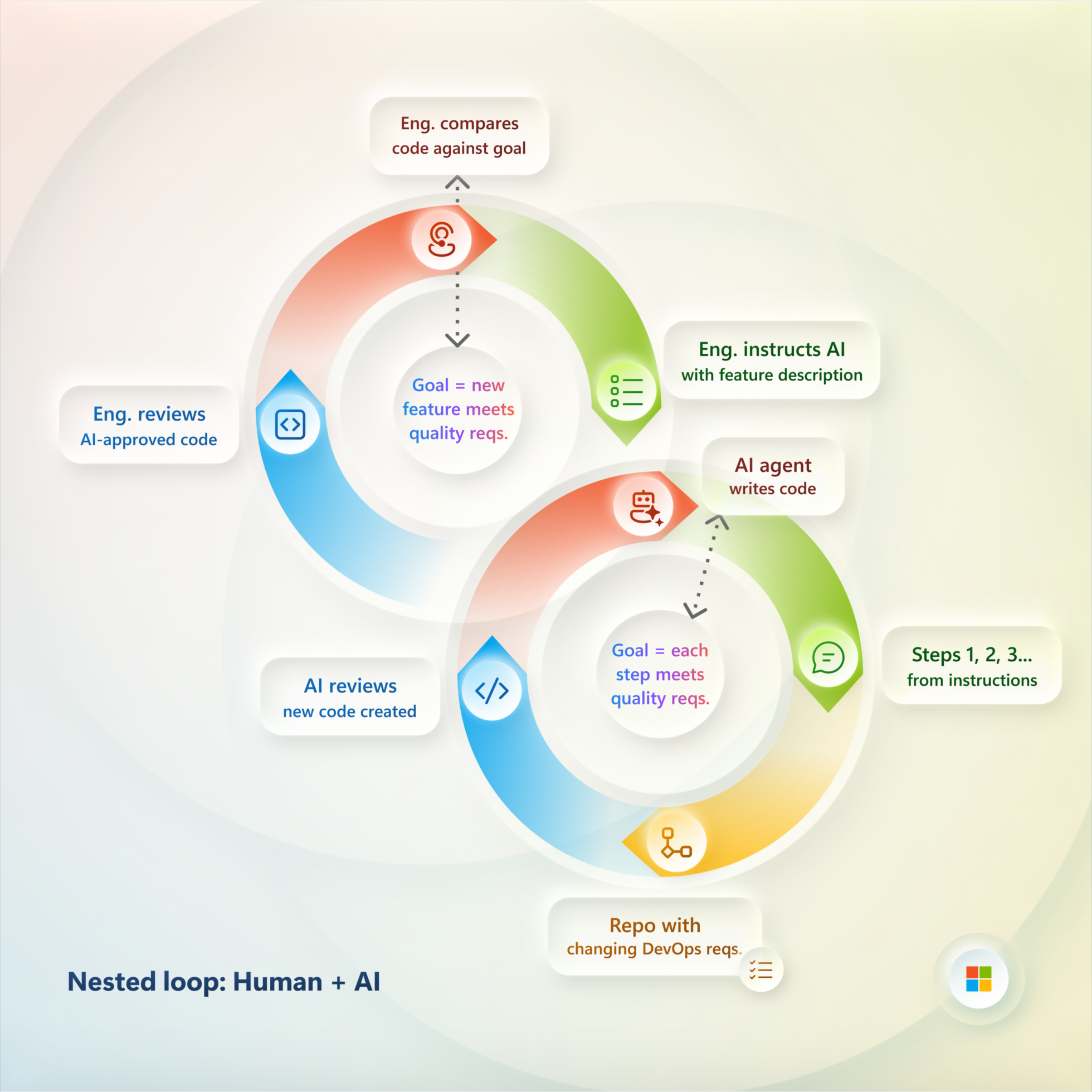
This approach represents a higher-level controller (e.g., software engineer) guiding the work of lower-level loops (e.g., the AI), setting broader objectives that cascade down. In theory, this layered structure can be scaled to represent highly sophisticated systems with multiple tiers of intelligence and autonomy.
Adapting how we design
So, what if the role of design shifted from directing users step-by-step to helping them track and shape their own progress toward a goal? How do we actually put this into practice—what would it look like to reimagine processes as dynamic, continuously evolving loops rather than rigid, linear sequences?
The loop in action
To illustrate this shift in thinking, let’s look at retail store operations, which have historically relied on deterministic linear workflows: forecast demand, place orders, stock shelves, repeat. But the weather forecast, product trends, local events, and other disturbances are out of the retailer’s control because our interactions with reality rarely follow a script (sound familiar?).
However, the loop model fundamentally reframes this challenge. Instead of framing inventory management as a sequence of tasks, it’s treated as a continuous cycle—one that senses, responds, and learns from the environment. Let’s take a look…
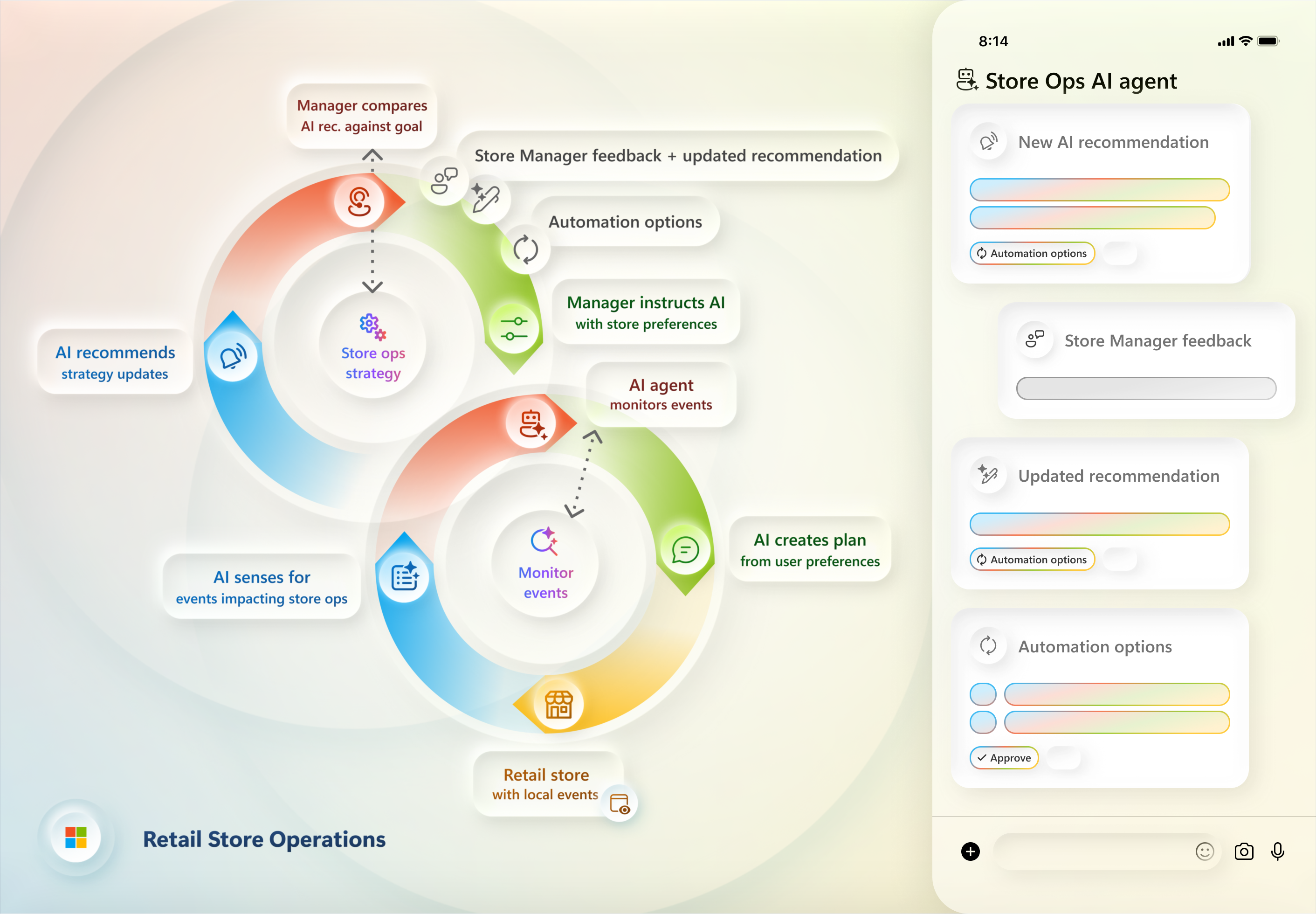
Goal
Ensure optimal inventory and reprioritization of store associate tasks.
Controller (making decisions)
When the system detects an upcoming local event, it compares the current inventory and historical sales patterns to the goal.
System output (sensing what is going on)
The agent generates a recommendation for the store manager based on expected impact, including suggested actions (e.g., restock bottled water, increase snack orders, adjust staffing). And, for changes that require higher-level approvals, the system uses a nested loop to notify appropriate users and provide context.
Environment (and disturbances)
The store’s “world”: location, weather, upcoming events, and customer flow. Disturbances such as sudden weather changes or competing local events are treated as critical signals, not just noise.
System input (taking action)
The AI agent continuously monitors local news, weather, and event feeds, sensing disturbances that could impact demand. The store manager reviews recommendations, approves or adjusts the plan, and provides feedback. And, for nested loops, higher-level managers can review change requests and adjust automation thresholds.
Controller (checking again)
The agent incorporates feedback, learns from user adjustments, and refines future recommendations. Over time, the loop becomes more attuned to the store’s unique rhythms and the manager’s preferences, increasing automation and accuracy.
Why this matters
This adaptive loop transforms the manager’s role from reactive problem-solver to proactive, well-informed decision-maker. Compared to traditional rigid workflows, this loop model is inherently more flexible and forgiving, promoting a dynamic partnership between manager and AI agent.
The system doesn’t just automate tasks—it augments human judgment, surfaces relevant context, and, importantly, continuously improves through feedback, vital to building user trust in AI.
And, as users’ trust in AI grows, so does their willingness to automate workflows and delegate tasks. This shift unlocks real business value: increased automation leads to greater efficiency, smarter decision-making, and ultimately, a measurable return on investment.
Key takeaways
As we transition from traditional, step-by-step workflows to adaptive, loop-based systems, we’ve identified five key principles to ensure success:
- Resilient Design: Feedback loops make systems responsive to change, enabling continuous improvement and resilience in real-world conditions.
- Flexible Solutions: Adaptive systems thrive on continuous feedback, improving efficiency and trust.
- Human-in-the-loop (HITL): Users—like store managers—become active partners with AI agents that learn and adapt, while systems are designed to keep humans in control at every step. HITL design ensures automation remains aligned with user intent.
- Oversight-ready: Loop-centric design elevates human judgment. Users shape outcomes through approvals, escalations, exceptions, and suggestions—making them dynamic participants, not passive operators.
- Future-proof: This approach drives measurable gains in productivity, smarter decisions, and stronger synergy between people and technology.
Closing thoughts
So, the next time you’re rerouting your daily commute or improvising when plans go sideways, remember: our interactions with the world rarely follow a script. Most journeys require adaptation and provide us ample opportunity to learn and grow with each twist and turn.
Designing for loops means embracing uncertainty, learning from feedback, and evolving alongside users. As designers, technologists, and everyday problem-solvers, we have a choice: continue paving rigid roads or begin creating loops that empower people to better navigate the real world with all its beautiful unpredictability.
What loops are you designing—and where might they take you next?
Read more
To stay in the know with Microsoft Design, follow us on Twitter and Instagram, or join our Windows or Office Insider program. And if you are interested in working with us at Microsoft, head over to aka.ms/DesignCareers.
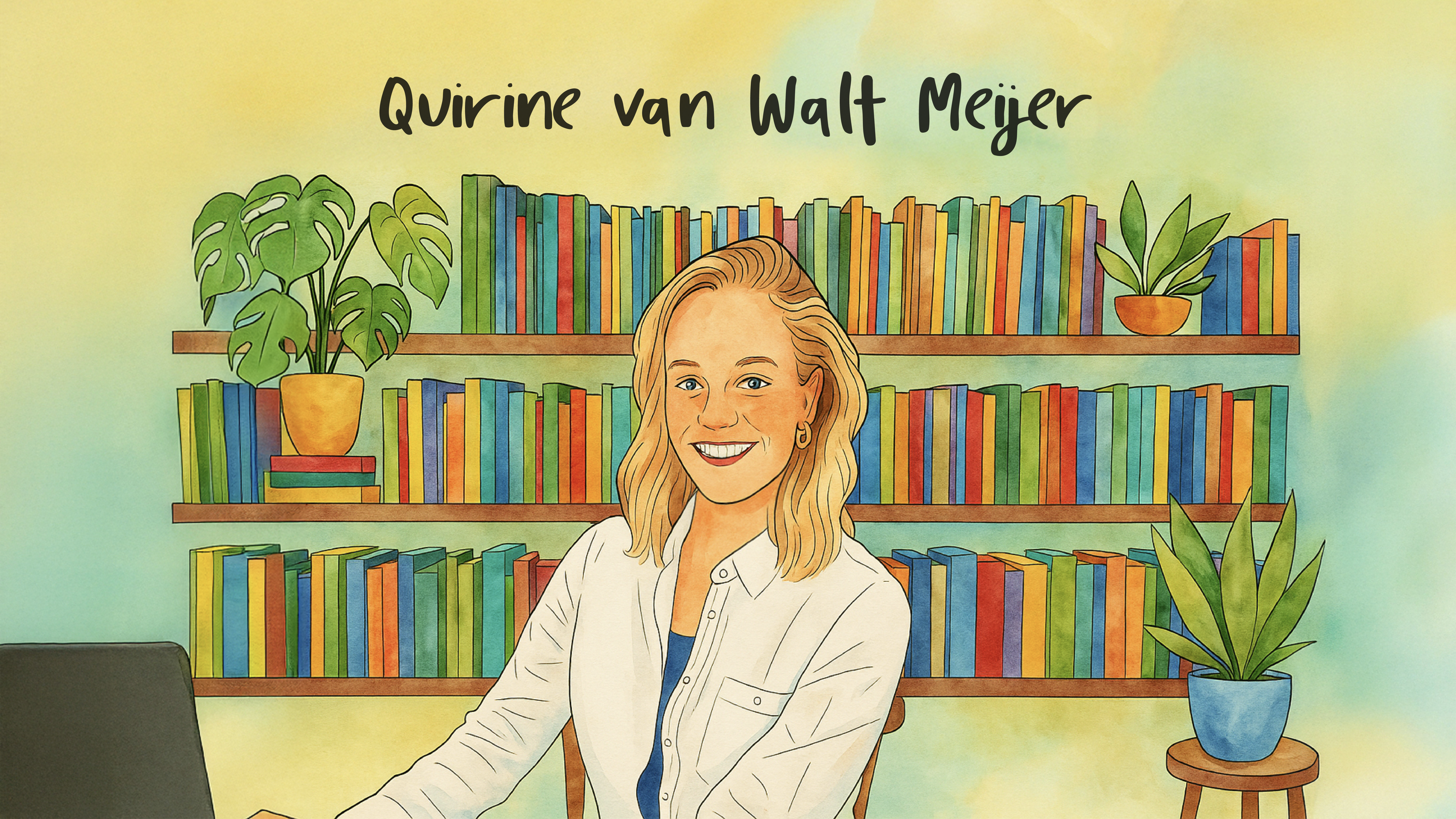
Vibe coding makes prototyping close to code, closer to users
Meet Quirine, a computational design manager exploring how AI reshapes the way her team builds and test ideas

Breaking the mold: Braz de Pina on the evolution of creativity and design in this AI era
Meet Braz De Pina, a Principal Product Designer for Microsoft’s Experience Collective Horizontal Design Studio

The future of AI isn’t just in the office—it’s on the job site
AI could create economic mobility for essential frontline workers—here’s how product makers can shift our thinking to encompass those experiences
